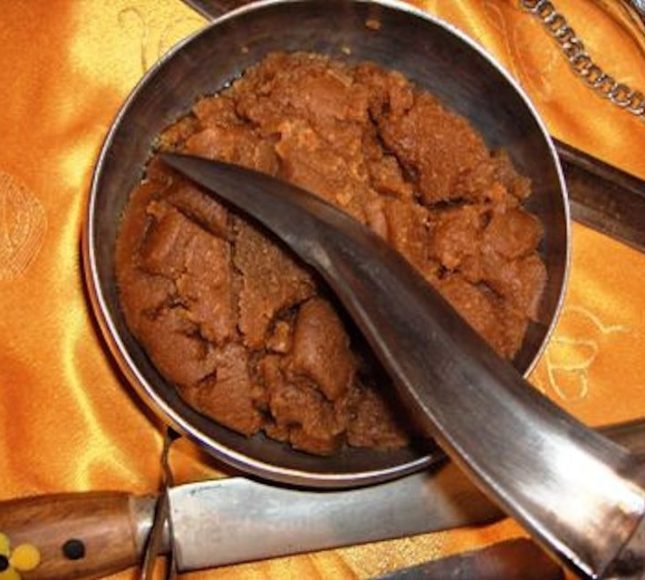BHOG: Literally: it means pleasure. In the Sikh context Bhog is the conclusion of the recitation of Guru Granth Sahib). It is followed by Ardaas and Vaak (or Hukam i.e. command of the Almighty). Finally, after the distribution of Karah Parshad, the ‘ceremony’ of Bhog is over. The Sikhs call it Bhog (pleasure) because it denotes the pleasure of reaping the fruit of listening (or reading) to the praise of the Almighty.
References :
1. The Sikh Reference Book, Dr Harjinder Singh Dilgeer 1997
The term Bhog in Sikhism derives from a Sanskrit word meaning “pleasure” or “delight.” However, its significance goes far beyond a simple translation—Bhog refers to a set of observances that accompany the concluding phases of a sacred reading of the Guru Granth Sahib, the eternal Guru of the Sikhs. The climax of this process is marked by a ceremonial recitation that signifies the end of an uninterrupted reading session of the scripture. Traditionally, this continuous recitation—known as an Akhand Path—can take up to 48 hours, carried out by a relay of readers. The conclusion of the reading, or the “Bhog,” is celebrated in a single, dedicated service that binds the community in shared spiritual fulfillment and collective remembrance of the divine word .
Bhog ceremonies are not confined to one ritual format. Depending on the circumstances, the complete reading of the Guru Granth Sahib may be undertaken in different patterns:
- Akhand Path: A continuous, no-break reading completed in approximately two days.
- Sahaj Path: A slower, more flexible reading process that can span weeks or even months, yet still culminating in a dedicated Bhog session.
- Saptahik Path: A variant where the scripture is read in segments over the course of a week before the Bhog is observed.
In each instance, the Bhog itself is performed in one unbroken session of recitation, symbolizing a definitive closure on the spiritual journey embarked upon during the reading. It is during this conclusive service that congregants often gather to reaffirm their commitment to the Guru’s teachings, celebrate community bonds, and sometimes even mark significant life events—ranging from anniversaries and weddings to the solemn observance of funerals .
An interesting facet of the Bhog ceremony is its association with the distribution of Karah Prashad—a sweet, sanctified offering that is shared among those present. Although some commentators might compare the sharing of this sacred meal to offering food to a deity, in Sikh practice it represents a communal act of sharing and equality. This meal underscores the core Sikh values of selfless service (seva) and equality, as all participants partake in the same sustenance irrespective of their social standing. Essentially, the Bhog not only marks the end of a scriptural recitation but also reaffirms the communal spirit and collective joy derived from embracing the divine message together .
The beauty of Bhog lies in its dual nature. On one level, it is a ceremonial conclusion to an act of devotion—a moment when the continuous, often grueling recital of the sacred text is finally brought to a close, leaving participants with a profound sense of spiritual achievement. On another level, it is a social and cultural event that reinforces community bonds, as families, friends, and fellow worshippers come together in celebration of the divine pleasure that the Guru’s word offers. In this way, Bhog serves as a reminder that the journey of spiritual enlightenment in Sikhism is both an individual and a collective experience, where conclusions are seen not as endings, but as gateways to renewed commitment and communal harmony .



